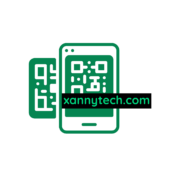
What are the Implications that Concern AI-Generated Art?
The advent of artificial intelligence (AI) has revolutionized many fields, including art. AI-generated art is created by algorithms that learn and mimic various artistic styles. These algorithms produce works strikingly similar to those by human artists. This technology holds immense potential but also raises ethical questions. These questions involve authorship, ownership, and the future of human creativity. At the intersection of technology and art, it is crucial to address these ethical considerations. This will help navigate the evolving landscape of creative expression. It’s time to close the official news at 22Bet and grab the opportunity to follow up in a current and never-before-seen article.
Authorship and Originality
Traditionally, art is attributed to a human creator. This creator’s unique vision and creativity are encapsulated in their work. However, when an AI algorithm produces art, it challenges our conventional understanding of authorship. Who should be credited for the creation? Is it the AI itself, the developers who designed the algorithm, or the individuals whose works were used to train the AI?
The ambiguity of authorship in AI-generated art blurs the lines between human and machine creativity. AI algorithms are typically trained on vast datasets of existing artworks. They learn patterns and styles from human artists. As a result, AI-generated art can be seen as derivative. This raises questions about its originality and authenticity. While the algorithm may create a new composition, it synthesizes and remixes elements from pre-existing works. This process raises concerns about whether AI-generated art can truly be considered original or if it merely replicates human creativity in a novel form.
Ownership and Intellectual Property Rights
In traditional art, the creator holds the copyright to their work. This grants them control over its reproduction, distribution, and sale. However, in AI-generated art, determining who owns the copyright becomes complex. AI algorithms can produce art without direct human intervention, making it hard to attribute ownership to a specific individual or entity.
One approach is to grant ownership to the developers who created the AI algorithm. They designed the system and provided the resources for it to generate art. However, this perspective overlooks the contributions of the artists whose works were used to train the AI. Another approach is to consider the AI itself as the creator, assigning it ownership rights. This notion raises further ethical and legal dilemmas. Current legal frameworks do not recognize non-human entities as holders of intellectual property rights.
The issue of ownership also extends to the datasets used to train AI algorithms. These datasets often consist of copyrighted works. Using such material without proper authorization can lead to copyright infringement. Artists and creators may feel their work is being exploited without due recognition or compensation. This sparks debates over the ethical use of existing art to train AI systems.
The Potential for AI to Overshadow Human Creativity
As AI-generated art gains popularity and commercial value, human artists may be marginalized. AI can produce art much faster and at a lower cost than humans. This raises concerns that the market for human-created art could shrink. This shift could have profound implications for the livelihoods of artists and the diversity of artistic expression.

Moreover, the increasing prevalence of AI-generated art may lead to a homogenization of styles. AI algorithms often rely on existing artworks for training. They may perpetuate and amplify prevailing trends, limiting the scope for novel and avant-garde creations. The unique, idiosyncratic qualities that define human creativity could be at risk. The efficiency and replicability of AI might overshadow these unique qualities.
Ethical Issues
To address these ethical issues, we must establish frameworks that balance all stakeholders’ interests:
Clear Attribution and Transparency:
We need guidelines for attributing AI-generated art. Both the contributions of algorithm developers and source artists should be recognized. Transparency in the creation process can help clarify the roles of humans and machines. This fosters a more equitable distribution of credit.
Revised Intellectual Property Laws:
Legal frameworks must evolve to address the complexities of AI-generated art. New categories of intellectual property may be needed to acknowledge the collaborative nature of AI and human creativity. Additionally, artists whose works are used in training datasets should be compensated fairly.
Promoting Human Creativity:
To prevent AI from overshadowing human creativity, it is important to support and promote human artists.

This can be done through grants, residencies, and platforms showcasing human-created art. Encouraging collaboration between human artists and AI can also lead to innovative works that highlight the strengths of both.
Ethical AI Development:
Developers should prioritize ethical considerations in AI system design and deployment. This includes obtaining proper licenses for training data, ensuring diversity in datasets, and implementing safeguards to prevent the misuse of AI-generated art.
Public Engagement and Education:
Engaging the public in discussions about the ethical implications of AI-generated art can raise awareness and foster informed dialogue. Educational initiatives can help demystify AI and its role in creative processes, encouraging a more nuanced understanding of its potential and limitations.
A Big Discussion Ahead
The rise of AI-generated art presents exciting opportunities and significant ethical challenges. As we navigate this evolving landscape, we must address questions of authorship, ownership, and the impact on human creativity. Clear guidelines are essential. Revising intellectual property laws and promoting ethical AI development is crucial. These steps will ensure that AI integration into the art world benefits all stakeholders. Ultimately, fostering a harmonious relationship between human and machine creativity will lead to a richer, more diverse artistic future.
